Results 41 to 50 of 170
-
10-09-2018, 10:39 PM #41Junior Member

- Join Date
- Oct 2018
- Posts
- 19
Thanked: 25
Absolutely!
From what I can tell from apprenticeship records, the Bradshaws had a fairly large family operation going on in the Crookeside area throughout the 1700s. A continual line of them apprenticed within the family.
Interestingly, the Linleys were also in the Crookside area, though much smaller family. At a guess, the reversed mark that is shown for William Linley may have been a play/pun on the Bradshaw mark after marriage.
-
The Following User Says Thank You to srsimon For This Useful Post:
Geezer (10-10-2018)
-
10-09-2018, 10:58 PM #42
-
10-10-2018, 01:12 AM #43Junior Member

- Join Date
- Oct 2018
- Posts
- 19
Thanked: 25
If it helps at all, the Cutlers Company of Hallamshire apprentice list can be reviewed here (with Bradshaw pre-searched): https://books.google.com/books?id=2K...adshaw&f=false
The main thing I started with was William Bradshaw getting his Freedom in 1698. That was through Anthony Coumb and appears to be where the Bradshaws established themselves in the Crookeside area of Sheffield (that's where Anthony Coumb was located). From there you can follow the Bradshaw line through cutler apprenticeships. In particular, you can follow the Bradshaw line through father-son apprenticeships in the Crookeside area (again, they were a prolific family for a while).
-
10-10-2018, 01:18 AM #44Junior Member

- Join Date
- Oct 2018
- Posts
- 19
Thanked: 25
To have even more fun, there was a line of George Johnsons (mentioned earlier in this thread as inheriting the reversed mark). It looks like the senior George Johnson apprenticed to one John Linley...gaining his Freedom in 1783. That would appear to be the origin of the tie-in between Johnson and the Linley reversed dart and pipe mark.
-
10-11-2018, 09:52 PM #45Junior Member

- Join Date
- Oct 2018
- Posts
- 19
Thanked: 25
And now for the reason for my obsession on the mark and my involvement on this thread:
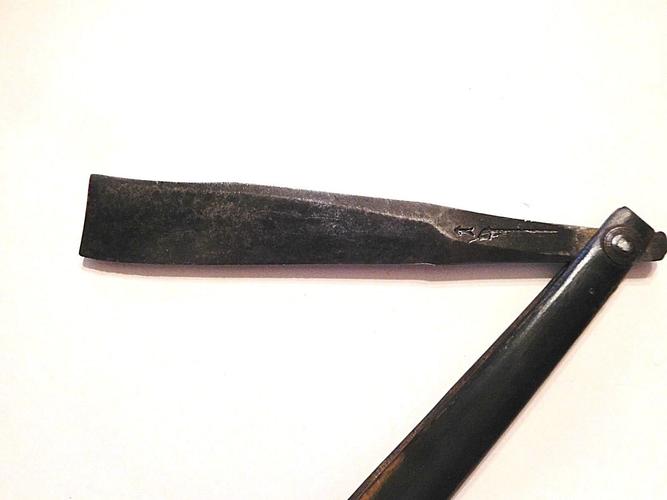
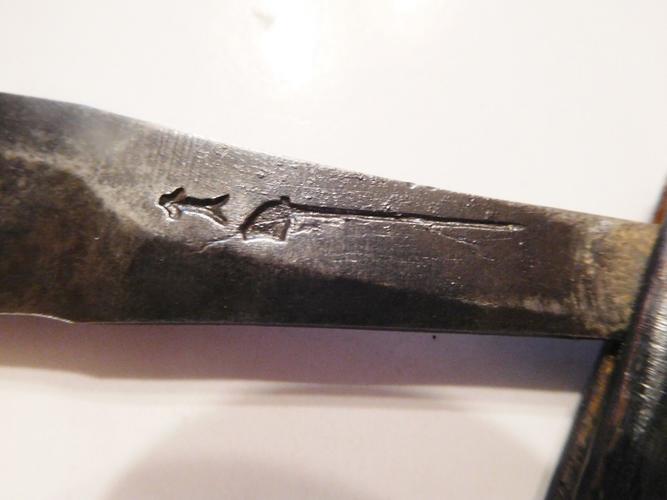
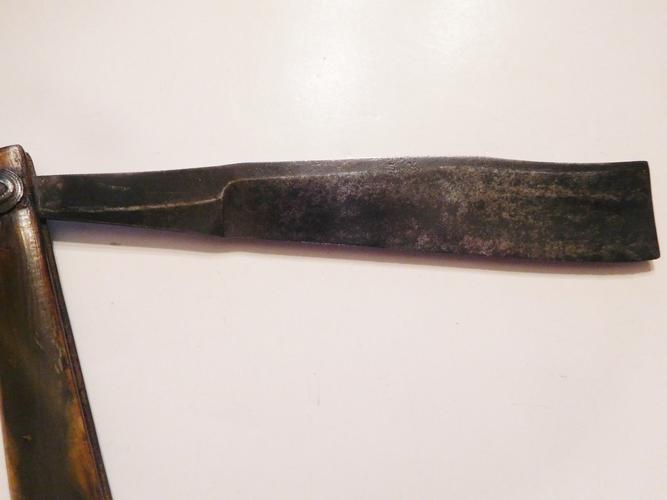
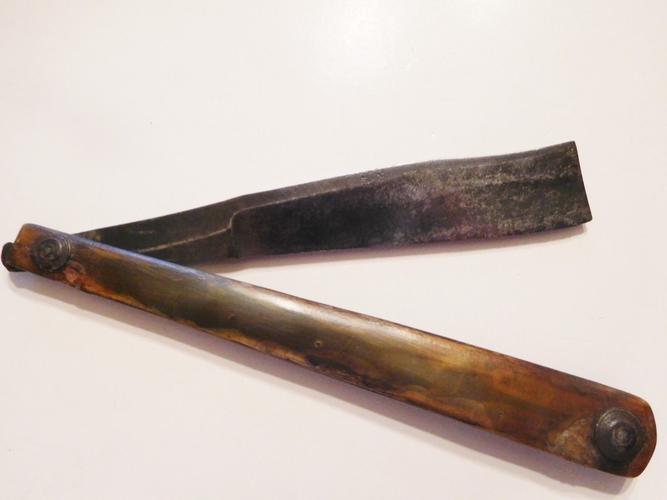
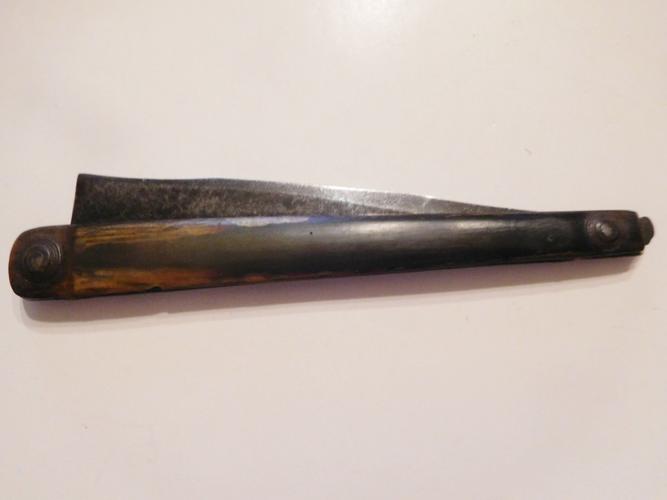
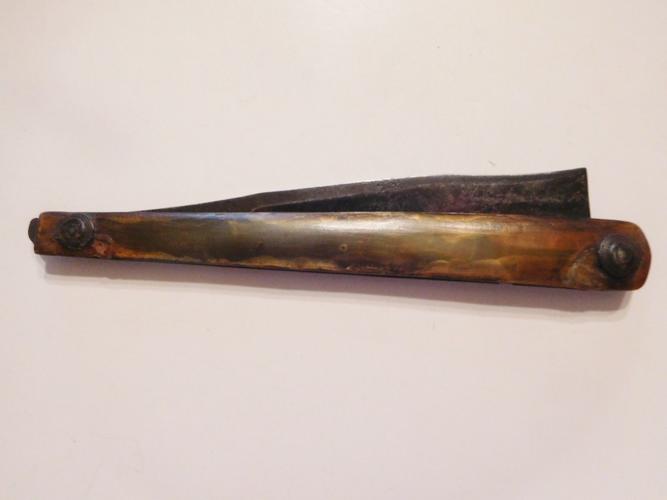
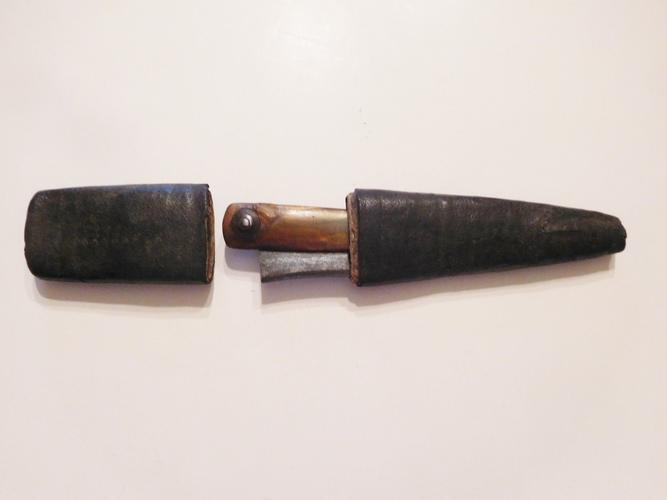
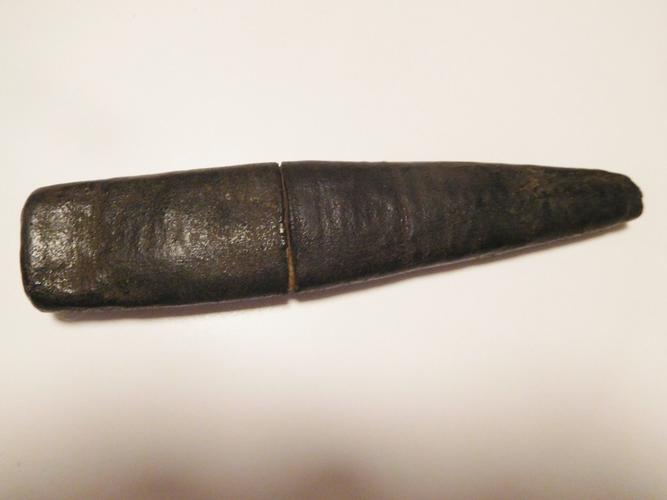
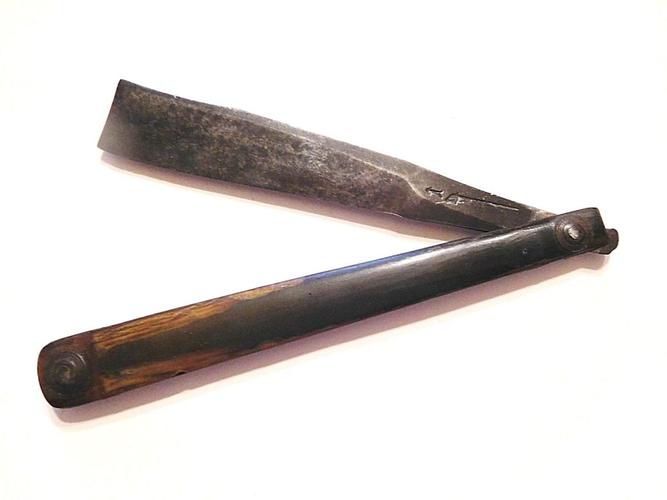
From my research: Christopher Bradshaw (or Bradshaw family) in the 1760's. Condition appears to be NOS...though I'll figure that out next week.
-
10-11-2018, 10:01 PM #46Junior Member

- Join Date
- Oct 2018
- Posts
- 19
Thanked: 25
Clarity:
The pipe and dart mark was in the Bradshaw family from 1698. That's the lower limit, though the style of the blade doesn't go back that far.
The tail style places the blade as prior to 1775 (ish)
The "dip-at-toe" on the spine places the blade (in the theory of this thread) at after 1755 (ish)
The Bradshaw family shows an uninterrupted Freedom/master lineage from 1698 though the early 1800s
All together, with other corroborating factors, puts the blade in the 1760s. The lack of wear on the spine and edge point to the blade never having been used. The original box (in crazy good condition) indicate that it was stock that was never removed from the box.
Looking forward to putting it to its intended purpose
-
The Following 3 Users Say Thank You to srsimon For This Useful Post:
782sirbrian (10-12-2018), Geezer (10-11-2018), MikeT (10-13-2018)
-
10-11-2018, 11:02 PM #47

I recommend getting in touch with Joan Unwin on that count. I would bet your razor was made by William Linley in the mid 1770's.
The marks as printed in sources like Gales & Martin or Sketchley's directory are often misprinted or wrong in some way compared to the actual products.
There are no Bradshaws listed in Sketchley's 1774 and only one in Gales & Martin 1787-- William, a pocket knife maker whose mark was "BRADSHAW", strongly indicating the pipe & dart was no longer in the family.
(The same William Bradshaw is listed in the 1790ish Universal British Directory, at which point he'd branched out into table knives)
It's also noteworthy that tail length is a very iffy indicator of age. There were significant variations from one manufacturer to another, and the concaved spine at the point of the blade was carried into the 1770's.
For an 18th century razor, there is remarkably little wear, but it is categorically not unused or even lightly used. When new, the 18th century Sheffield style had a flat line from point to tail. Yours has a very clear dip at the end of the sharpened edge. That dip is from significant wear. Also note the somewhat lighter bands of metal along the edge and spine -- those are very wide bands of hone wear.
All that said, it is likely to be entirely usable and definitely one of the older razors you can find.-Zak Jarvis. Writer. Artist. Bon vivant.
-
-
10-11-2018, 11:48 PM #48Junior Member

- Join Date
- Oct 2018
- Posts
- 19
Thanked: 25
A lot to cover there...please indulge...
Regarding the Linleys and the similar mark:
The Linley mark was reversed. Let's call it left-to-right a pipe and dart vs. the dart and pipe that you see on the images above. This is not insignificant -- marks were a serious thing at the time. I work (in my off time) as an historic blacksmith. I've done a bit of research in this area. At the time, marks were treated quite seriously...you applied for them and had them approved by the Cutlers Company prior to use or you faced some pretty serious fines. Multiple instances of fines and levies are noted in their records for folks that changed/added to their marks without approval. The Linley pipe and dart mark _is_ really close to the Bradshaw dart and pipe mark. Close enough that the Master Cutler would normally have disapproved it...but if you look at the records, William Linley was Master Cutler shortly after the 1774 directory that you cite...and his son John was Master Cutler 2 years later. In other words: they were connected.
The reversed pipe and dart mark is different enough from the dart and pipe mark assigned to William Bradshaw that it could have passed muster with the master cutler...particularly for a connected family.
Main take away: pipe and dart is NOT the same as dart and pipe. They're two different marks. Considered (for whatever reasons) to be distinct enough at the time to determine which forge a piece came from.
Regarding Sketchleys: It was a great resource, but a secondary one. The Cutler's Company of Hallamshire was _the_ authority in the area. Their records are remarkably well maintained. While the records I cited are not the mark requests/assignments, they're along similar lines and in many cases a more definitive authority -- they trace apprenticeships. Marks were often passed from father to son, particularly when the son(s) apprenticed with the father. These were only loosely chronicled...and did not require a new request with the Cutlers for approval. So Sketchleys showing a reversed "pipe and dart" associated with William Linley 2 years before he was Master Cutler is not indicative of the "dart and pipe" mark having moved on from the Bradshaws, who can be shown to be in _heavy_ operation at the time.
Regarding tail length: completely agreed. It's secondary at best. But it is an indicator. As is blade profile. And spine profile...which brings us to --
Edge profile: I've made a number of blades. Haven't worked on razors yet, because reasons...but I've done enough other blade styles and profiles to know a bit. The "dip" at the tip and at the plunge (near the heel) can be from the initial grind. Particularly for someone who hasn't done the same grind 1000+ times before -- you grind too far on one side and then even it up to keep the edge centered, taking the profile up from the baseline. The main thing you're looking for to determine use/wear is the secondary signs -- wear along the spine in particular. "taping" of the spine wasn't an option until the 20th century -- you'd show the typical wear along the spine ridge when honing the edge without tape (a good thing for geometry, as noted in other threads). You'd also see an increasing depth of edge bevel over time. The lack of either indicates a lack of honing, which indicates an unused blade.
-
10-11-2018, 11:58 PM #49

I strongly suggest you look up the Cutlers Company and get in touch with Dr. Joan Unwin. She can clear up the marks issue for you.
When you get the razor, you will see there is significant flattening along the spine and bevel from honing.-Zak Jarvis. Writer. Artist. Bon vivant.
-
10-12-2018, 12:06 AM #50Junior Member

- Join Date
- Oct 2018
- Posts
- 19
Thanked: 25
Please forward contact details - I'd love to talk to her.
If the razor does show wear, it will make my decision to hone and use it that much easier


 317Likes
317Likes LinkBack URL
LinkBack URL About LinkBacks
About LinkBacks






 Reply With Quote
Reply With Quote

